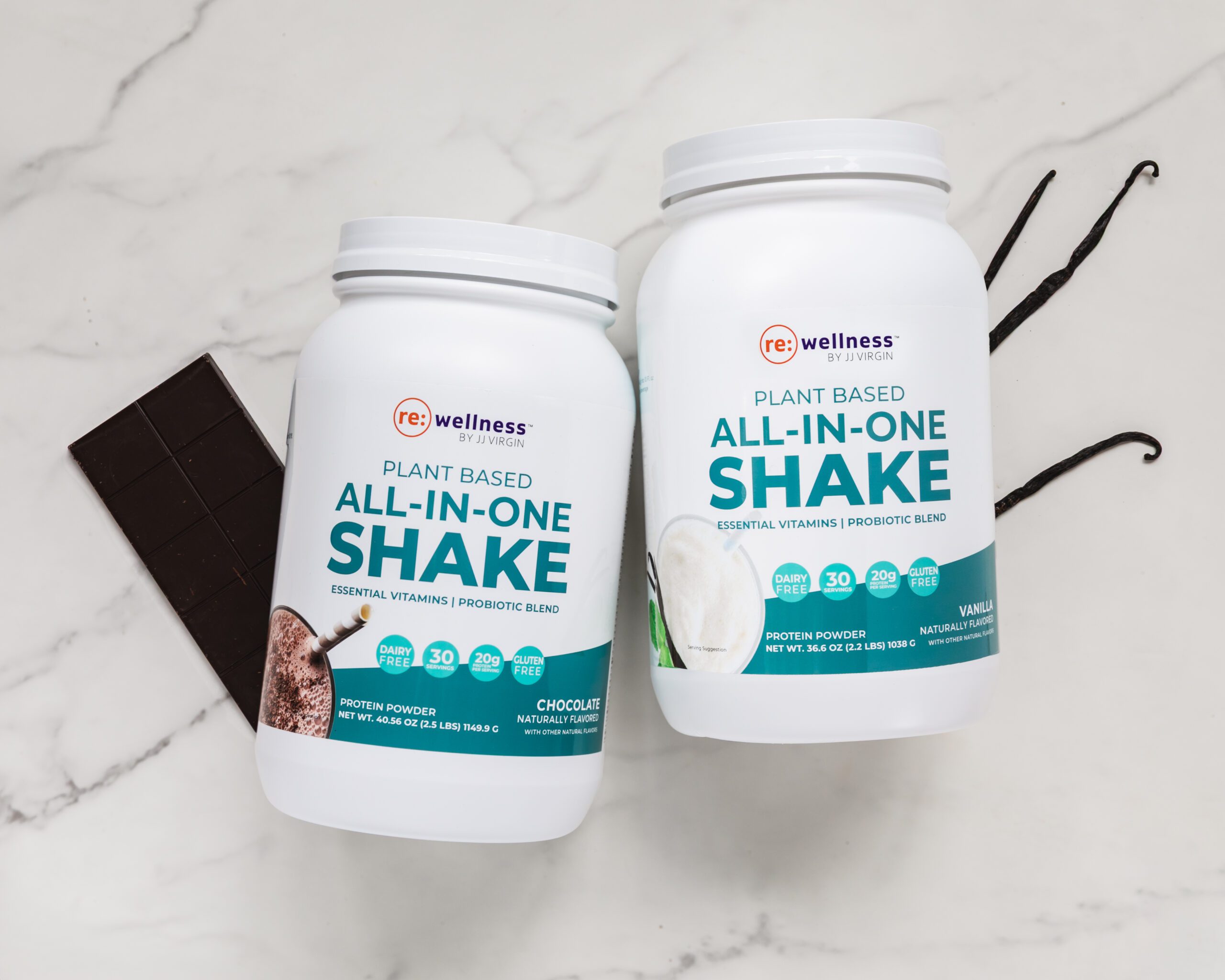When I worked with clients back in the 1980s, I used a tape measure and body-fat calipers to measure body composition. During that time, some clients felt frustrated because their bathroom scale didn’t always reflect their progress, and I always looked for other ways to track their measurements.
Eventually, I realized I wasn’t getting all the information I needed. Neither were they. Beyond simply monitoring someone’s body weight, I wanted to know things like how much of that body weight was fat, what kind of fat they had, and how much muscle they carried. Once we had those numbers, we could create diet and fitness goals.
A bioimpedance scale, aka body-composition scale, provides that kind of information.
How Does a Body-Composition Scale Work?
A body-composition scale uses bioelectrical impedance analysis (BIA). This non-invasive method measures your body composition by safely sending a very small electrical signal throughout your body. Based on how easily the signal travels, the scale can measure things like water, muscle mass, and fat.
While I’ve used body-composition scales for decades, they’ve only recently become affordable. My first professional body-composition scale, which I used on Dr. Phil, cost about $5,000. Today, a decent version costs less than $100, and a high-end one only costs about $300.
Along with a tape measure, plus an annual or biannual DEXA scan, you’ve got everything you need to measure your body composition.
What Does a Body-Composition Scale Measure?
Let’s look more closely at the metrics that body-composition scales measure. Keep in mind that while most provide essential information such as body fat and fat-free mass, not all scales will provide every one of the below features.
Body Weight
Like a standard bathroom scale, a body-composition scale measures how much you weigh. Body weight measures the total mass of your body, including bone density, muscle mass, and body fat.
While your body weight offers a valuable starting point, you’ll never know the metrics with that number alone, such as how much fat and muscle you carry.
Body-Fat Percentage
This metric measures the proportion of fat mass in relation to your total body weight. Body-fat percentage gets a bad rap, but it does some amazing things: it insulates, cushions your organs, and stores energy so your body stays fueled when you’re, say, intermittent fasting.
But too much body fat isn’t a good thing, especially visceral adipose tissue or belly fat (more on that below). Being overweight or obese can increase your risk of cardiovascular disease, diabetes, and certain types of cancer. Paying attention to your body-fat percentage reveals whether you are in a healthy range.
If you’re a woman, the average body-fat range is 25-31% of your total weight. The optimal range (which you should aim for) is around 21-24%. If you’re younger or athletic, it could be 14-20%.
For men, the average body fat is 18-24% of your total weight. The optimal range is 14-17%, and if you’re a real athletic guy, you might be 6-13% body fat.
Visceral Fat
When a body-composition scale measures body-fat percentage, it primarily looks at two types of fat:
- Subcutaneous fat is just beneath the skin. It accumulates around your thighs, hips, butt, and abdomen. Subcutaneous fat is the “good” kind; it insulates and protects organs and provides energy.
- Visceral fat (or intra-abdominal fat) is deeper within the abdominal cavity, surrounding organs such as the liver, pancreas, and intestines. This dangerous fat is the party crasher that increases your risk of chronic disease, increases inflammation, makes you more insulin resistant, knocks your hormones out of balance, and makes weight loss so much more difficult.
I can’t emphasize how dangerous VAT fat can be for heart health and so much more.1 That’s why many scales measure it separately from body-fat percentage. Your visceral adipose tissue or VAT should be as low as possible, preferably 10% or less of your total body fat.
Muscle Mass
Body-composition scales assess your muscle mass, or how much muscle tissue you carry. Research shows that optimal muscle can help you powerfully move into your 40s, 50s, 60s, and beyond while preventing age-related muscle mass and strength loss (sarcopenia).2
Optimizing muscle provides so many other benefits, including burning fat and getting lean, balancing your blood sugar, and reducing your risk of chronic disease.
Water Weight
Body-composition scales can measure your water weight or hydration level. Water contributes to so many biological processes (consider that your organs are primarily water).
Your skin is about 64% water, your brain and muscles are 75-80% water, and your lungs are about 83% water. These and other organs demand proper hydration. Paying attention to your water weight provides insights into your body’s fluid balance, so these processes function well.
ElectroReplenish is a complete and balanced electrolyte product to help promote optimal hydration.* You can easily mix this powder into water or your favorite liquid, or pour them into popsicle molds and freeze (it comes in a delicious lemon-orange flavor!).
Bone Density
Some advanced body-composition scales estimate bone density, or the amount of mineral content in bone tissue. This metric reveals the strength and density of your bones, reflecting their ability to withstand stress and resist fractures.
Low bone density can increase the risk of osteoporosis and fractures. 3
Basal Metabolic Rate (BMR)
Your basal metabolic rate (BMR) represents the number of calories your body needs to maintain basic functions at rest, such as breathing, circulating blood, producing and repairing cells, and maintaining body temperature.
Instead of BMR, some body-composition scales look at resting metabolism. This broader term encompasses BMR along with additional energy expenditure from activities including daily activities and standing.
Muscle-Quality Score
A muscle-quality score is a metric that assesses the overall quality of your muscle mass and muscle strength. In other words, rather than just determining how much muscle mass you have, this score aims to evaluate the functional capability and efficiency of that muscle.
A higher muscle-quality score indicates a greater proportion of lean muscle mass compared with body fat and better overall muscle strength.
Metabolic Age
Metabolic age looks at your body composition and other factors to estimate the age that your metabolism functions.
If your metabolic age is lower than your chronological age, your metabolism is more efficient or healthier compared with your chronological or “real” age. Conversely, if your metabolic age is higher, your metabolism may be less efficient or slower compared with your chronological age.
Optimizing Your Body Composition
Body-composition scales are portable, affordable, easy to use, and have a solid margin for error (about 3-8%). Whether you want to lose fat or build muscle, these scales provide valuable information to track body-fat percentage, muscle mass, and more to help you fine-tune your plan.
I recommend weighing yourself every day and using other metrics (such as muscle mass and body fat) on a body-composition scale once a week. If you see a weird jump on your measurements, do the body composition scale again the next day to track trends.
If you want to lose weight, aim to lose more fat than muscle. When you lose weight, you’ll lose fat-free mass as well, but you want to make sure that you lose more fat than fat-free mass. The do that, combine a protein-first eating plan with weight-resistance exercise. If you dramatically cut calories, you’re going to lose precious muscle.

If you want to build muscle, on the other hand, your goal should be to gain more muscle mass than fat. Maintaining or building muscle and supporting fat-free mass helps you stay fit and focused for the long haul.
Keep in mind, too, that a body-composition scale provides helpful information to reach your goals. It’s not there to shame you! If you’re not seeing the results you want, those numbers allow you to make some shifts in your plan.
Need some recommendations? I like this budget-minded Omron Body-Composition Scale. If you want to upgrade, consider the Inbody Body Composition Scale.
References:
- Elffers TW, de Mutsert R, Lamb HJ, de Roos A, Willems van Dijk K, Rosendaal FR, Jukema JW, Trompet S. Body fat distribution, in particular visceral fat, is associated with cardiometabolic risk factors in obese women. PLoS One. 2017 Sep 28;12(9):e0185403. doi: 10.1371/journal.pone.0185403. PMID: 28957363; PMCID: PMC5619737.
- Distefano G, Goodpaster BH. Effects of Exercise and Aging on Skeletal Muscle. Cold Spring Harb Perspect Med. 2018 Mar 1;8(3):a029785. doi: 10.1101/cshperspect.a029785. PMID: 28432116; PMCID: PMC5830901.
- Osteoporosis: assessing the risk of fragility fracture. London: National Institute for Health and Care Excellence (NICE); 2017 Feb. PMID: 32186835.
*These statements have not been evaluated by the Food & Drug Administration. Products mentioned are not intended to diagnose, treat, cure, or prevent any disease. The views in this blog by JJ Virgin should never be used as a substitute for professional medical advice. Please work with a healthcare practitioner concerning any medical problem or concern.





